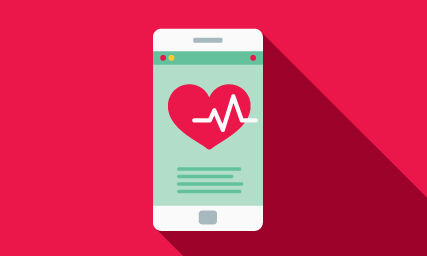Heart disease is responsible for about a quarter of all deaths in the United States each year. That’s around 655,000 people annually, or one death every 36 seconds. Heart disease is a broad term that describes a variety of diseases that all have one thing in common: They affect the functioning of the heart.
This can be caused by problems with the blood supply to the heart (coronary artery disease), problems with internal parts of the heart (structural heart disease), problems with the muscle of the heart (cardiomyopathy), or problems with the conduction system (arrhythmias).
Symptoms of Heart Disease
Regardless of the type, heart disease can cause symptoms including:
- Pain, tightness, pressure and discomfort in your chest
- Shortness of breath or wheezing, usually with activity but sometimes at rest
- Swelling in the legs, ankles or feet
- Getting fatigued with usual activities such as walking around the block, climbing a flight of stairs or doing household chores
- Pain in your neck, jaw, throat or back
Sometimes these symptoms are mistaken for other common conditions, such as heartburn, indigestion, asthma or just “getting older.” Getting to the correct diagnosis is important because heart disease can be treated or sometimes reversed, often leading to a better quality and longer life.
While some risk factors are outside your control — age and genetics, for example — there are steps you can take to reduce your likelihood of developing heart disease.
A good first step is to understand your risk for developing heart disease.
What Are the Risk Factors for Heart Disease?
Some people are born at a higher risk of developing heart disease. Typically, heart disease affects older men, people with a family history of heart disease and Black Americans.
However, you can treat or control some major risk factors, which include:
- Use of tobacco
- High cholesterol
- High blood pressure
- Physical inactivity
- Obesity or being overweight
- Diabetes
There are also a number of common factors that may contribute to the development of heart disease, including:
- Stress
- Drinking too much alcohol
- Poor diet and nutrition
Controlling or managing your risk factors can make you less likely to develop heart disease. But it’s also important to understand how heart disease can affect people differently depending on your age or sex.
Heart Disease Is Not the Same for Everyone
Most people can conjure the classic image of a heart attack: an older person, usually a man, clutching their chest with a look of pain on their face. That picture isn’t exactly inaccurate, but it also does not tell a complete story.
“Heart disease is not simply a man’s problem,” says Dr. Dawn Hui, UT Health San Antonio cardiologist. “Cardiovascular disease is the number one cause of death for both men and women in the United States. Although women tend to develop heart disease later in life than men — by 7 to 10 years — it is responsible for 1 in 5 deaths among women.”
The later onset of heart disease for many women is due to the protective effects of estrogen. During menopause, a woman’s estrogen levels change and cause other changes in her body, including to the blood vessels, cholesterol levels, and metabolism. These changes may contribute to the development of heart disease.
Heart Attack Symptoms in Women
The stereotypical symptoms of a heart attack like crushing chest pain are largely accurate, at least for men. But Dr. Hui cautions that women should also look out for other symptoms of heart disease, which may be quite different than those that men experience.
“With time, we have come to recognize that women may have different symptoms of heart disease,” Dr. Hui says. These include:
- Nausea
- Shortness of breath
- Fatigue
- Dizziness
- Chest pressure or tightness rather than pain
- Pain in other locations such as the back, arm, jaw or stomach
These symptoms are less dramatic and specific than the intense chest pain commonly thought of as a symptom of heart disease or a heart attack. That means they are also easier to overlook, Dr. Hui says. “There may be delays in recognizing the problem or the problem may be unknowingly ignored,” she says. “Growing awareness that these symptoms may be due to heart disease also has helped to identify other patients.”
Heart disease isn’t just an older person’s problem either. While increased age is one of the prime risk factors, you can develop heart disease at any age. And risk factors like diabetes, obesity, and smoking are rising in younger people. Understanding your risk is important, but regardless of your risk level, the best way to avoid heart failure is to change your behavior to prevent it.
Preventing Heart Disease
Heart disease can affect anyone, but you can make changes in your habits and lifestyle to reduce your risk. The American Heart Association recommends three changes to your lifestyle to reduce your risk for heart disease: eat smart, move more and be well.
Eat smart
Make healthy choices at the grocery store and when eating out. Eat plenty of fruits and vegetables and limit foods that are high in saturated and trans fats, sugar and salt.
You should also “eat the rainbow” by incorporating foods that are different colors. Eating foods that are different colors is more likely to give you the variety of nutrients you need for a healthy diet.
Move more
Set a goal of getting 150 minutes of exercise per week, or about 20 minutes each day. Moving doesn’t have to mean intense aerobic exercise, though cardio exercises are an excellent way to prevent heart disease.
Just getting out of your chair to move around, standing while you work, or taking short walks around your neighborhood are excellent ways to begin moving.
Be well
Get enough sleep, practice mindfulness and manage your stress. All of these practices improve your heart health and have other positive health benefits, too. You don’t have to overhaul your entire lifestyle overnight — just get started by gradually incorporating better choices throughout your day.
Cardiology at University Health
University Health offers the most advanced heart care available through the renowned Heart & Vascular Institute.

Heart disease is the leading cause of death for both men and women.
Our free online risk assessment only takes a few minutes. It will help you better understand your risk of developing heart disease and how you may be able to lower it.





